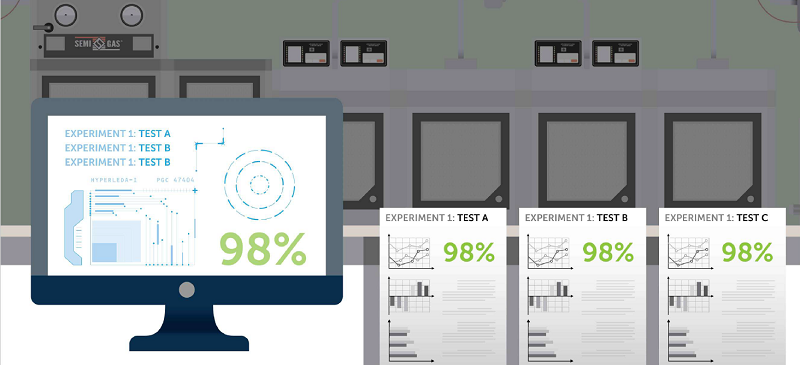
Pure Delivery for Pure Discovery: Gas Delivery’s Role in Powering Innovation
Precision is everything when it comes to scientific research. Without it, the slightest variation in experimental factors can result in drastically different outcomes—requiring researchers to waste valuable time and resources retesting hypotheses. This potential for compromise becomes even more acute when specialty gases are required for experimentation, since even the slightest contamination of those molecules can drastically impact research findings.
These obstacles to innovation aren’t present in a single area of the research process; rather, each step of the process poses unique challenges for the scientist that can impact the purity of their results. Let’s take a look at the obstacles presented before, during, and after experimentations:
Before Innovation: Funding
Even before the first experiment can begin, labs must secure funding for their research. Unfortunately, budget constraints are all too familiar for today’s scientists, with over 80% reporting that obtaining federal research grants is harder today than it was five years ago. For scientists using specialty gases as part of their experiments, this is further complicated by the fact that the molecules they need can cost upwards of $10,000 per container. With such tight budgetary constraints, researchers can’t afford for costly gas contaminations to drain their resources.
Gas delivery system that include features like ultra high purity (UHP) tied-diaphragm stainless steel regulators, orbitally welded connections, and VCR Face Seal Fittings help to ensure that impurities cannot penetrate the system and keep the gases they are delivering pure, so that investigators can make the most out of their budgets by ensuring their gases will not compromise experiment outcomes.
During Innovation: Safety
When it comes time to begin experimentation, maintaining safe conditions in the lab must be a major consideration—particularly for labs that work with specialty gases. Most researchers tend to interact with gas delivery equipment on an infrequent basis, so investing in systems that are intuitive can help eliminate operator error and greatly reduce lab accidents. User-friendly controls, easy-to-identify switches and indicators, and audible and visual alarms are all system features that can help mitigate this risk of error.
After Innovation: Publishing
At the end of any research project comes a paper explaining the research process, documenting observations, and outlining findings. While these reports contribute to the scientific community as a whole, they also serve an important role in helping labs secure funding for future experimentation. This need to achieve publishable results places a high pressure on researchers, with a recent survey revealing that 69% report they feel pushed to focus on projects that will yield quick results.
As researchers work toward obtaining publishable results, gas delivery equipment that yields reproducible outcomes the first time helps condense the timeframe an experiment takes. Such equipment has high-performance control technology that enables scientists to precisely set, tightly maintain, and rapidly adjust system parameters in real time to optimize experimentation.
Equipment to Power Your Innovation
To find the right gas delivery system to mitigate the obstacles scientists encounter during the research process, labs should seek out equipment built with consistency, accuracy, and reliability in mind. Here are a few factors to consider:
- Proof of Purity: Has the system undergone a validated quality assurance test to ensure it meets stringent purity requirements?
- Track Record of Success: What is the system’s reputation in the industry? Does it have a track record of success operating in labs?
- Operationalized by Experts: Is the equipment developed by a team of mechanical, chemical, and electrical engineers that are knowledgeable about lab environment challenges and regulations?
- Customization: Is the system customizable to your distinct R&D requirements?
At AES, we specialize in manufacturing gas delivery equipment optimized for the unique challenges of lab environments. With our two renowned equipment lines, SEMI-GAS® and VERSA-GAS™, and nearly 50 years’ expertise facing the unique challenges of research environments, we have the know-how to optimize your lab environment for successful experimentation using a range of specialty gases.
Interested in learning how Applied Energy Systems’ solutions can serve your facility? Download the Pure Delivery for Pure Discoveries Infographic here, or contact AES today.
Share this Post:

